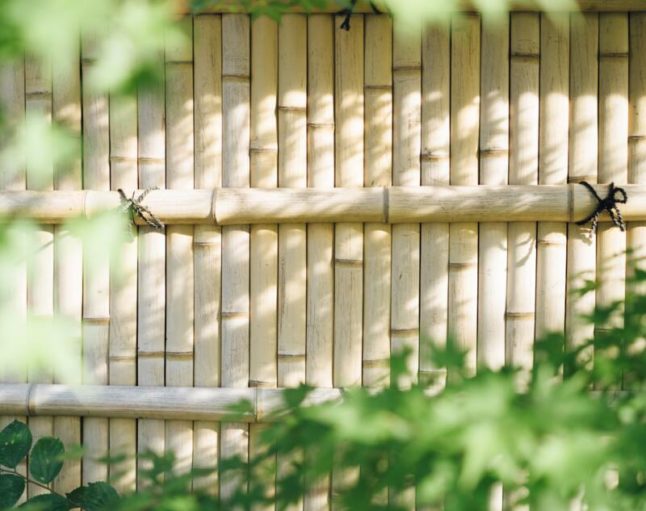All Categories
Featured

Whether you like the classic look of paint or the natural appearance of a stain, these finishes safeguard your wood fencing from the elements and expand its lifespan. Exactly how usually should you paint or stain your wooden fencing?
Aspects That Affect Painting and Staining Frequency. The frequency at which you need to paint or tarnish your fencing is influenced by several elements, including your climate, the kind of wood, and the finish you select. Recognizing these variables can assist you establish a much more accurate schedule for your fencing's maintenance.
- Environment and Weather Conditions. The neighborhood climate condition in your location will have a substantial effect on how promptly your fence needs attention. In regions with severe weather condition, the fencing will experience even more deterioration, requiring more frequent maintenance.
Hot, Sunny Climates: Direct sunshine can cause timber to dry out and come to be brittle, causing cracking and fading. If your fencing is revealed to intense sunlight, you may need to repaint or restain every 2 to 3 years to maintain its appearance and secure it from UV damage. Rainfall and Humidity: Locations with frequent rainfall or high moisture can cause moisture permeating right into the wood. This can cause the wood to swell, rot, or create mold and mildew and mildew. In such environments, discoloration or paint every 1 to 2 years is commonly necessary to maintain the timber sealed and protected. Cold, Freezing Temperatures: If your fencing is revealed to freezing temperatures, the timber might contract and broaden with the changes in temperature level. This can trigger the paint or tarnish to split and peel off. In chilly climates, fences usually need to be painted or restained every 3 to 5 years. 2. Type of Wood. The kind of timber your fencing is made from will influence exactly how regularly it needs painting or discoloration. Different timbers respond in different ways to weather, moisture, and UV rays.
Cedar and Redwood: These woods are naturally immune to decay and insect damages, making them a lot more long lasting than various other woods. They might still require staining every 2 to 3 years to keep their shade and shield them from the sunlight's harsh rays. Pine and Fir: Softwoods like want and fir are extra vulnerable to absorbing dampness and fading in time. You might need to stain or repaint these timbers regularly-- about every 1 to 2 years-- to stop water damages and maintain them looking fresh. Pressure-Treated Timber: Pressure-treated timber withstands rot and bug damage yet can still soak up dampness. It's suggested to use a discolor or sealant every 2 to 3 years to keep the wood shielded. 3. Tarnish vs. repaint. The type of surface you pick for your fencing-- paint or stain-- affects just how usually you will need to touch it up.

Paint: Repaint kinds a thick, protective layer externally of the timber. It's efficient blocking out UV rays and wetness, yet in time it can peel, split, or discolor. Usually, a repainted fencing needs to be repainted every 3 to 5 years, relying on direct exposure to the elements. Tarnish: Tarnish soaks into the timber, supplying an extra all-natural appearance while still supplying protection from wetness and UV rays. Tarnish normally requires to be reapplied every 2 to 3 years, as it has a tendency to fade faster than paint, specifically when exposed to direct sunshine. 4. Signs Your Fence Demands a Fresh Layer. Even if you don't follow a collection timeline for painting or staining, it is necessary to expect signs that indicate when your fence requires focus. Seek these usual signs:
Discoloring or Discoloration: If your fencing is shedding its shade or has actually turned grey, it may be time to apply a fresh coat of tarnish or paint to restore its look. Peeling or Breaking: If the paint or discolor is peeling or fracturing, your fencing is no more fully safeguarded, and water may have the ability to permeate right into the timber. This can lead to rot or mildew. Water Taking in: You can carry out a basic water test by sprinkling some water on your fence. The finish is still functioning if the water beads up. If it takes in, it's time to repaint or restain. 5. Proper Upkeep for Durability. To extend the life of your fencing and make certain the most effective outcomes, require time to prepare the surface before applying paint or stain. Clean the fencing extensively, eliminating dust, particles, mold, and mold. Repair any kind of cracks or damages to the wood before beginning the staining or painting process.
Select a completely dry, mild day for using your finish. Prevent doing this on very hot, cold, or moist days, as it can stain or create the paint to dry too swiftly, leaving touches or an uneven coating. Follow the manufacturer's directions for the finest application methods, and always permit the wood to completely dry totally between layers.
Conclusion. As a whole, a wooden fencing should be repainted or tarnished every 2 to 3 years, though the regularity can differ depending on your climate, the type of timber, and whether the fence is repainted or stained. Routine upkeep helps protect the timber from damages brought on by rain, sunlight, and wetness, ensuring your fence stays solid, functional, and attractive. By remaining on top of fencing care, you can enjoy its charm for several years to find, without the fear of early deterioration.
Latest Posts
Find the Top Auto Repair Deals in Montclare, Chicago
Published May 24, 25
1 min read
Trustworthy Overhead Door Solutions for Houses and Businesses
Published May 23, 25
1 min read
Improve Your Residential Property with Overhead Door Systems
Published May 22, 25
1 min read